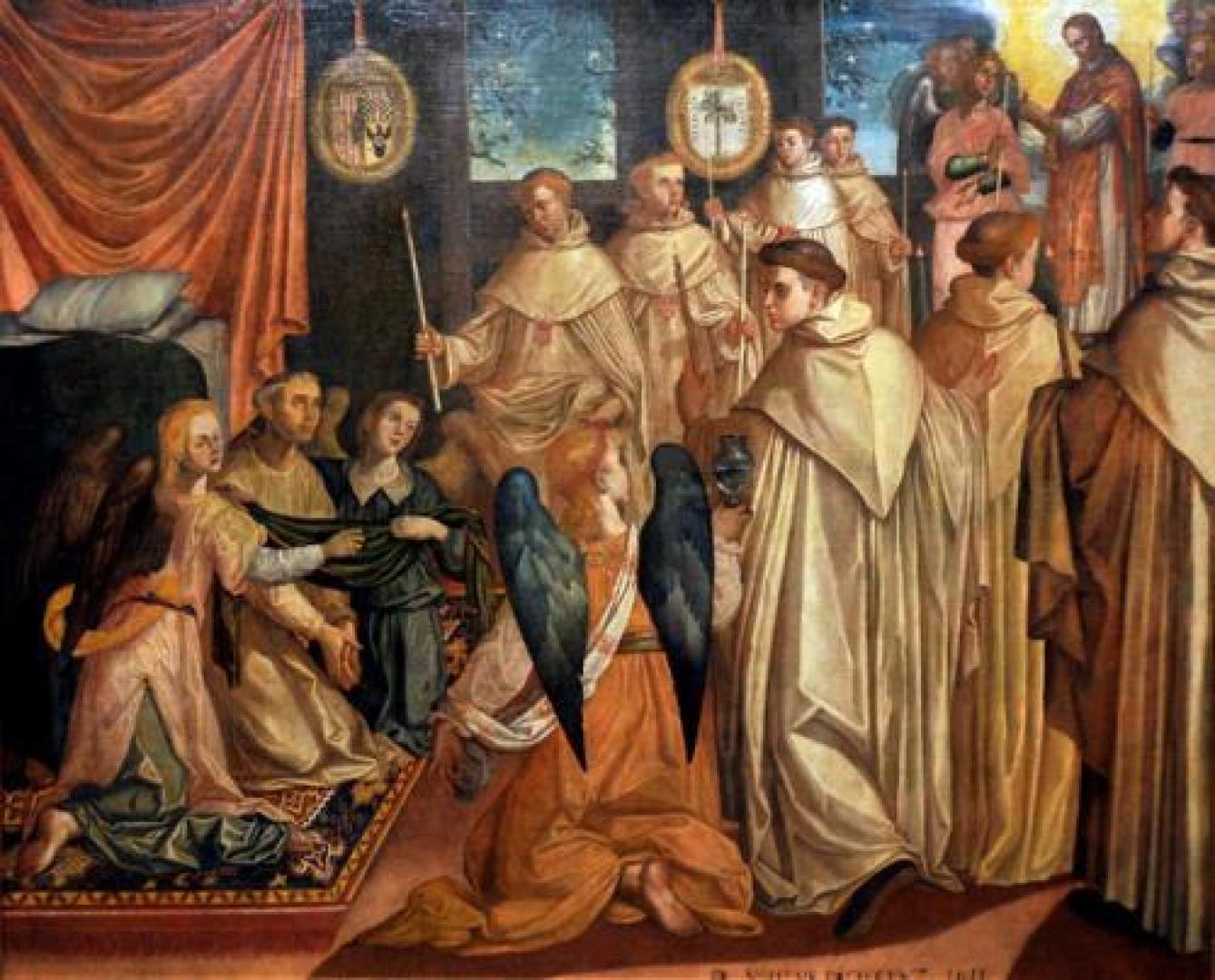In an occasional column, Dorothy Blundell considers a different angle on three angel paintings in the collections of The Bowes Museum where she is a volunteer
IF you were asked to picture an angel, you would probably think wings, halo and maybe a harp. Perhaps you believe angels to be spiritual beings; benevolent celestial intermediaries between Heaven and humans.
Or maybe you think of them simply as decoration on cards and trees at Christmas. It’s possible that fans of the marvellous 1946 film, It’s a Wonderful Life, subscribe to the theory that every time a bell rings, an angel gets its wings.
And we might all do well to heed the phrase in the Bible (Hebrews 13:2): “Be not inhospitable to strangers, lest they be angels in disguise.”
A 17th century Spanish painting in The Bowes Museum depicts such an angel. Raphael, his true identity now revealed, looks out of the picture and challenges you to witness the miracle taking place at that very moment. The subject of the painting, entitled Tobias Restoring His Father’s Sight, is taken from the Apocryphal Book of Tobit and it is by Antonio de Pereda y Salgado (1611-1678).
Here’s the story: A blind old man called Tobit, thinking he does not have long to live, sends his son, Tobias, to a foreign land to collect a debt.
A stranger – the disguised angel – accompanies Tobias as his companion and protector. During the journey, the stranger instructs him to catch a fish and when they return, the stranger – Raphael (his name means “God has healed” ), tells Tobias to take the gallbladder from the fish and squeeze it into his father’s eyes as the gall will cure blindness. If you see the painting close-up, take a second or two to admire the incredible metallic colour and scaly detail of that dead fish, and then remind yourself it was painted 370 years ago.
During the Renaissance, the most frequently represented episode of the story was the actual journey of Tobias and Raphael.
Countless parents of sons who went travelling in those dangerous and uncertain times would commission or buy a devotional work of art depicting Tobias and Raphael in the hope that the angel would similarly watch over their offspring.
And so to music and an angel strumming – not a harp, but a nine-string guitar. Depicted full length, in a pink tunic over a grey robe with a brown cloak, he or she looks like a winged Roman troubadour. In Western religions, angels – from the Greek “angelos” meaning messenger – are genderless spirits who sometimes take human form. Their portrayal in art began with the early church and the choice of wardrobe, from flowing dress to classical style and even armour in some cases, were possibly to align with public perceptions of power and authority at the time.
The painting, dated 1658, is by Juan M de la Cuesta and although it is called An Angel with a Guitar, it could be a fragment from a much larger composition, as evidenced by rays of light seen across the upper left corner. Not much is known about the artist, other than he was active in Madrid in the mid-17th century. He might have been a pupil of Juan de la Corte who had studied with Diego Velázquez, the leading artist of the Spanish Golden Age, and who links us to our third painting.
Angels with black wings, including one dressed in black (suggestive of death, perhaps), attend a holy man. This is the Last Communion of St Peter Nolasco.
The picture is more than 400 years old and for half that time, it was displayed undercover in the open air at a convent in Seville, Spain. It was one of six paintings by Francisco Pacheco who, along with Alonso Vázquez, had been commissioned to decorate the cloister with images from the life of Peter Nolasco (1189-1256), the founder of the Mercedarian order to help Christians captured in Moorish raids.
Pacheco was actually more important as a writer about painting than he was as an artist. He wrote treatises on paints and techniques and in 1611, the year he produced this painting, he made a pilgrimage to Toledo to visit an elderly El Greco. When he returned, an 11-year-old Diego Velázquez entered his workshop as an apprentice. It is not beyond the realms of possibility that this was among the first pictures which Velázquez saw.
Who knows? He might have mixed the paints for it or even added a brush stoke or two? In this sense, the painting represents a significant moment in art history: where three influential individuals intersect: El Greco, Pacheco and Velázquez.
Whereas the first two paintings are part of the 75 from the Count of Quinto’s Collection which John and Josephine Bowes acquired in the 1860s, this painting came to the museum as a gift 100 years later. It was in such a poor condition that it was kept from public view for 50 years until about 12 years ago when a major restoration project began.
Months of painstaking work was able to resurrect the image now on display in which a group of monks attend Saint Peter as he kneels by his bed to receive his last communion from Christ (top right of picture).
The painting’s transformation is nothing short of a miracle: go and take a look. You might even hear a bell ring in the distance.






